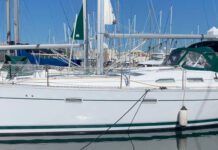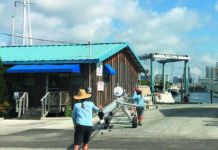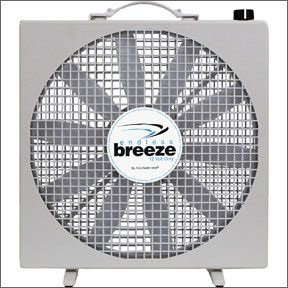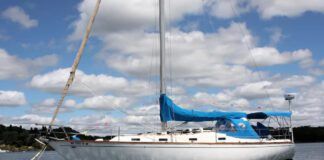
- Forums New posts Unanswered threads Register Top Posts Email
- What's new New posts New Posts (legacy) Latest activity New media
- Media New media New comments
- Boat Info Downloads Weekly Quiz Topic FAQ 10000boatnames.com
- Classifieds Sell Your Boat Used Gear for Sale
- Parts General Marine Parts Hunter Beneteau Catalina MacGregor Oday
- Help Terms of Use Monday Mail Subscribe Monday Mail Unsubscribe

Should I Buy 1975 Sirocco S-15?
- Thread starter IASailor
- Start date Jun 8, 2020
- Forums for All Owners
- Ask All Sailors
I was out sailing my Catalina 22 and talked to this guy with a boat. He said it was for sale. I don't know hardly anything about it but I know it floats because I saw him sailing it! 1975 Sirocco S-15 Has a swing keel and furling jib. Trailer needs servicing for ball-bearings, but works fine for our short trips. My wife is actually on board and needs to learn how to sail so this would be perfect! Should I just buy this boat and trailer for 500 bucks? It also comes with storage at the lake for the year.
Handshake deal for the boat! I'll pick it up Saturday.
The deal is on and the weather is looking great for my first sail on the boat!
Attachments

SBO Weather and Forecasting Forum Jim & John
Good luck... Pictures are due.
Looks like a nice model. Little "cabin" to put stuff to keep from getting wet is nice. Trailer-sailing it will be easy because stepping the mast will only take a couple minutes so launching will be fast and easy. Depending on your cruising grounds, you might be surprised to be sailing it more often than your bigger boat. With regard to the trailer and the bearings, that is a concern, but also the age of the tires. On that size trailer a common tire size is 4.80x12. If the tires look like they should be replaced, and if there is enough fender clearance, one might consider going to the next larger tire size, say 5.30x12. Reason being, fewer wheel RPMs for the same speed and that would help out the bearings. Also, the speed rating for the 4.80x12 tires is not very much. With your larger boat and larger wheels that was never a problem but with the little guys that can be. Having said that, we towed a Falcon 16 with 4.80x12 wheels all the way from Rhode Island to California and never had a problem, but that was probably dumb luck (I was a lot younger then), or did they make better tires back then? We still own the Falcon 16 (just under 16-feet) and she is a really nice boat. Had lots of good times with her and I'm sure your new S-15 will do likewise. Question: Does the rudder swing up, or "kick up"? That's a handy feature.
John Nantz said: Question: Does the rudder swing up, or "kick up"? That's a handy feature. Click to expand
I love my Sirocco 15. SO MUCH FUN !!! I live on PEI. Lots of sand and shallow water. I can go anywhere with this boat!

IASailor said: It will kick up if it hits something. Click to expand
Auto Release Cleat For 4-6mm (5/32-1/4") Rope |Clamcleat®
It looks like you did well. Ken
- This site uses cookies to help personalise content, tailor your experience and to keep you logged in if you register. By continuing to use this site, you are consenting to our use of cookies. Accept Learn more…
Great choice! Your favorites are temporarily saved for this session. Sign in to save them permanently, access them on any device, and receive relevant alerts.
- Sailboat Guide
Sirocco 15 is a 15 ′ 3 ″ / 4.7 m monohull sailboat built by Sirocco Boatworks Ltd. (CAN) starting in 1970.

Rig and Sails
Auxilary power, accomodations, calculations.
The theoretical maximum speed that a displacement hull can move efficiently through the water is determined by it's waterline length and displacement. It may be unable to reach this speed if the boat is underpowered or heavily loaded, though it may exceed this speed given enough power. Read more.
Classic hull speed formula:
Hull Speed = 1.34 x √LWL
Max Speed/Length ratio = 8.26 ÷ Displacement/Length ratio .311 Hull Speed = Max Speed/Length ratio x √LWL
Sail Area / Displacement Ratio
A measure of the power of the sails relative to the weight of the boat. The higher the number, the higher the performance, but the harder the boat will be to handle. This ratio is a "non-dimensional" value that facilitates comparisons between boats of different types and sizes. Read more.
SA/D = SA ÷ (D ÷ 64) 2/3
- SA : Sail area in square feet, derived by adding the mainsail area to 100% of the foretriangle area (the lateral area above the deck between the mast and the forestay).
- D : Displacement in pounds.
Ballast / Displacement Ratio
A measure of the stability of a boat's hull that suggests how well a monohull will stand up to its sails. The ballast displacement ratio indicates how much of the weight of a boat is placed for maximum stability against capsizing and is an indicator of stiffness and resistance to capsize.
Ballast / Displacement * 100
Displacement / Length Ratio
A measure of the weight of the boat relative to it's length at the waterline. The higher a boat’s D/L ratio, the more easily it will carry a load and the more comfortable its motion will be. The lower a boat's ratio is, the less power it takes to drive the boat to its nominal hull speed or beyond. Read more.
D/L = (D ÷ 2240) ÷ (0.01 x LWL)³
- D: Displacement of the boat in pounds.
- LWL: Waterline length in feet
Comfort Ratio
This ratio assess how quickly and abruptly a boat’s hull reacts to waves in a significant seaway, these being the elements of a boat’s motion most likely to cause seasickness. Read more.
Comfort ratio = D ÷ (.65 x (.7 LWL + .3 LOA) x Beam 1.33 )
- D: Displacement of the boat in pounds
- LOA: Length overall in feet
- Beam: Width of boat at the widest point in feet
Capsize Screening Formula
This formula attempts to indicate whether a given boat might be too wide and light to readily right itself after being overturned in extreme conditions. Read more.
CSV = Beam ÷ ³√(D / 64)
Embed this page on your own website by copying and pasting this code.
- About Sailboat Guide
©2024 Sea Time Tech, LLC
This site is protected by reCAPTCHA and the Google Privacy Policy and Terms of Service apply.
Review of Sirocco 15
Basic specs..
The hull is made of fibreglass. Generally, a hull made of fibreglass requires only a minimum of maintenance during the sailing season. And outside the sailing season, just bottom cleaning and perhaps anti-fouling painting once a year - a few hours of work, that's all.
The Sirocco 15 is equipped with a fractional rig. A fractional rig has smaller headsails which make tacking easier, which is an advantage for cruisers and racers, of course. The downside is that having the wind from behind often requires a gennaker or a spinnaker for optimal speed.
The Sirocco 15 is equipped with a swing keel. A swing keel is a pivoting lifting keel, allowing to sail both coastal and inland waters.
The boat can sail close to the beach as the draft is just 0.20 - 0.30 meter (0.66 - 0.96 ft) dependent of the load. See immersion rate below.
Sailing characteristics
This section covers widely used rules of thumb to describe the sailing characteristics. Please note that even though the calculations are correct, the interpretation of the results might not be valid for extreme boats.
What is Capsize Screening Formula (CSF)?
The capsize screening value for Sirocco 15 is 3.04, indicating that this boat would not be accepted to participate in ocean races.
What is Theoretical Maximum Hull Speed?
The theoretical maximal speed of a displacement boat of this length is 5.1 knots. The term "Theoretical Maximum Hull Speed" is widely used even though a boat can sail faster. The term shall be interpreted as above the theoretical speed a great additional power is necessary for a small gain in speed.
The immersion rate is defined as the weight required to sink the boat a certain level. The immersion rate for Sirocco 15 is about 52 kg/cm, alternatively 293 lbs/inch. Meaning: if you load 52 kg cargo on the boat then it will sink 1 cm. Alternatively, if you load 293 lbs cargo on the boat it will sink 1 inch.
Sailing statistics
This section is statistical comparison with similar boats of the same category. The basis of the following statistical computations is our unique database with more than 26,000 different boat types and 350,000 data points.
What is Motion Comfort Ratio (MCR)?
What is L/B (Length Beam Ratio)?
What is a Ballast Ratio?
What is Displacement Length Ratio?
SA/D (Sail Area Displacement ratio) Indicates how fast the boat is in light wind: - Cruising Boats have ratios 10-15 - Cruiser-Racers have ratios 16-20 - Racers have ratios above 20 - High-Performance Racers have ratios above 24 Sail-area/displacement ratio (SA/D ratio): 38.94
Maintenance
When buying anti-fouling bottom paint, it's nice to know how much to buy. The surface of the wet bottom is about 10m 2 (107 ft 2 ). Based on this, your favourite maritime shop can tell you the quantity you need.
If you need to renew parts of your running rig and is not quite sure of the dimensions, you may find the estimates computed below useful.
| Usage | Length | Diameter | ||
| Jib sheet | 4.7 m | (15.3 feet) | 8 mm | (5/16 inch) |
| Genoa sheet | 4.7 m | (15.3 feet) | 8 mm | (5/16 inch) |
| Mainsheet | 11.7 m | (38.3 feet) | 8 mm | (5/16 inch) |
| Spinnaker sheet | 10.3 m | (33.7 feet) | 8 mm | (5/16 inch) |
This section is reserved boat owner's modifications, improvements, etc. Here you might find (or contribute with) inspiration for your boat.
Do you have changes/improvements you would like to share? Upload a photo and describe what you have done.
We are always looking for new photos. If you can contribute with photos for Sirocco 15 it would be a great help.
If you have any comments to the review, improvement suggestions, or the like, feel free to contact us . Criticism helps us to improve.
ShortyPen.com
- Board Boats
- Day Sailors
- Pocket Cruisers
- Multihull Sailboats
- Contributors
- Shorty Articles
- Contact Shorty

| Boat Name | Sirocco 15 | |
| Manufacturer | Diller-Schwill Yachts | |
| Hull Type | Pocket Cruiser | |
| LOA | 15'4" | (4.66m) |
| Beam | 5'11" | (1.8m) |
| Weight | 470 | (213.62kg) |
| Ballast | 75 | (34.09kg) |
| Keel Type | centerboard | |
| Berths | 2 | |
| Draft Up | 8" | (0.2m) |
| Draft Down | 3'10" | (1.17m) |
| Year Start | 1970 | |
| Year End | ||
| Number Made | 350 | |
| Country | Canada | |
| MIC | ||
| Shortypen ID | 38 | |
| Clone | ||


Easy Branches allows you to share your guest post within our network in any countries of the world to reach Global customers start sharing your stories today!
Easy Branches
Call: 076 367 766

Sailing the Sirocco 15
Sailing my Sirocco 15, aka 'Ginger Snap', on Clear Lake in Iowa. Winds were steady 12 knots with gusts up to 19. Winds calmed at the end.
Share this page

Sharing with friends or Social Media

- Find or Create a Group
Keyboard Shortcuts
Diller Schwill 16 and Sirocco 15 Sailboat Forum [email protected]
Group information, group email addresses.
- Post: [email protected]
- Subscribe: [email protected]
- Unsubscribe: [email protected]
- Group Owner: [email protected]
- Help: [email protected]
Group Settings
- All members can post to the group.
- Posts to this group do not require approval from the moderators.
- Posts from new users require approval from the moderators.
- Messages are set to reply to group.
- Subscriptions to this group do not require approval from the moderators.
- Archive is visible to anyone.
- Wiki is visible to members only.
- Members can edit their messages.
- Members can set their subscriptions to no email.
Top Hashtags [See All]
Join This Group or Log In If You Are Already A Member
Archived Messages

- Forum Listing
- Marketplace
- Advanced Search
- Welcome To SailNet
- New Member Introductions
- SailNet is a forum community dedicated to Sailing enthusiasts. Come join the discussion about sailing, modifications, classifieds, troubleshooting, repairs, reviews, maintenance, and more!
New Sirocco E15 Owner
- Add to quote
I have not owned a sailboat since 1989 when I sold my much loved Shields One/Design. We acquired this little sloop from an estate last week. Have the trailer and new sails. As someone noted four years ago in this forum, specs are hard to come by. We are going to ship this little gem into a mechanically proper boat. Would love to connect with any other owners, please-and-thank you.
Welcome to SailNet! The Sirocco does not look as if it sails like a Shields, but it should be more fun than sitting on the beach!
Hello. A fellow E 15 owner here, serial number 66974. Really fun boat to sail. Not fast but stable and easy single handed set up and sail. Her gel coat is faded and floors a bit soft, bit still gets the job done and lots of fun. If you have any rigging questions, need pics, etc. let me know. I see pics of the 15 online but never mine with the cubby area with the cut out. Wonder if that’s what makes it an e vs a regular 15? Anyway you will enjoy it and although slow, still lots of fun. Some guy on a jet ski stopped by while I was sailing it a few weeks ago to ask about it. I run a 2hp evenrude on it. I found the electric trolling motor didn’t cut it in high winds, it just didn’t have the power. Just an fyi if you plan on adding any power. Also contacted Genco, the Canadian maker of the sails and they don’t make them anymore, so take care of them.
Attachments

Lol when I would drain the boat for the first 3 years all those little white foam pellets would come out. Sat in a barn for many years so I’m sure it got the same treatment from mice. Not anymore so I think the foam is done. Great idea on the pool noodles. I debated spraying some great stuff under the floor to firm it up but have not yet done so. Your boat looks great! Glad you were able to save such a nice example for the future. I’m going to power wash mine and hit the gel coat with a polisher in the fall to see if I can liven it up a bit.
- ?
- 177.1K members
Top Contributors this Month
- New Sailboats
- Sailboats 21-30ft
- Sailboats 31-35ft
- Sailboats 36-40ft
- Sailboats Over 40ft
- Sailboats Under 21feet
- used_sailboats
- Apps and Computer Programs
- Communications
- Fishfinders
- Handheld Electronics
- Plotters MFDS Rradar
- Wind, Speed & Depth Instruments
- Anchoring Mooring
- Running Rigging
- Sails Canvas
- Standing Rigging
- Diesel Engines
- Off Grid Energy
- Cleaning Waxing
- DIY Projects
- Repair, Tools & Materials
- Spare Parts
- Tools & Gadgets
- Cabin Comfort
- Ventilation
- Footwear Apparel
- Foul Weather Gear
- Mailport & PS Advisor
- Inside Practical Sailor Blog
- Activate My Web Access
- Reset Password
- Customer Service

- Free Newsletter

Tartan 37 Used Boat Review

C&C 33 Mark II Used Boat Review

Island Packet 350 Used Boat Review

Beneteau 393 Used Boat Review

How to Create a Bullet-Proof VHF/SSB Backup

Tips From A First “Sail” on the ICW

Tillerpilot Tips and Safety Cautions


Best Crimpers and Strippers for Fixing Marine Electrical Connectors

Are Wrinkles Killing Your Sail Shape?

Superlight Anchors: Not Just for Racers

Refining Furling Line Fairleads

Revive Your Mast Like a Pro

Diesel-Electric Hybrids Vs. Electric: Sailing’s Auxiliary Power Future

Sailing Triteia: Budget Bluewater Cruising

How To Keep Pipe Fittings Dry: Sealant and Teflon Tape Tests

How Much Does it Cost to Own a Sailboat in Quebec,…

Anode Basics: Dos and Don’ts

What’s The Best Bottom Paint?

Boat Hook and Fender Hacks

Product Hacks: Velcro, Bounce, Anti-Skid Mats and Pool Lights

Stopping Holding-tank Odors

Giving Bugs the Big Goodbye

Galley Gadgets for the Cruising Sailor

Cold Weather Clothes to Extend the Sailing Season

Five Best Gloves: Sailing and DIYing in All Weather

Sailing Gear for Kids

What’s the Best Sunscreen?

R. Tucker Thompson Tall Ship Youth Voyage

On Watch: This 60-Year-Old Hinckley Pilot 35 is Also a Working…

On Watch: America’s Cup

On Watch: All Eyes on Europe Sail Racing

Dear Readers
- Sails, Rigging & Deck Gear
Windy Ways: Practical Sailor Whips Up 12-Volt Cabin Fan Test
Caframo kona and hella turbo breeze past competition in a test of 12-volt fans in the $20 to $100 price range..

Wherever you are on a hot, humid summer evening-anchored in a cove on a Missouri lake, tied to a dock near Chesapeake Bay, motoring the Intracoastal Waterway in Florida, or stuck anywhere without a whisper of wind-getting air movement inside the cabin can be critical to everyones comfort. A mechanical device for internal air circulation promotes crew harmony and improves dispositions. Whether you are on an overnighter with a cuddy cabin or a 60-foot yacht, one or two electric fans can make a big difference. A well-placed fan can even make air-conditioning and heating more efficient in V-berths and quarter-berths.

For this article, we concentrated on 12-volt fans that can be bulkhead- or console-mounted. Ventilation, the intake of fresh air and exhaust of internal air, either passively through vents, cowlings, and Dorades, or actively through battery- or solar-powered hatch and deck fans, will be covered in a later article.
There are a lot of variables to consider when evaluating or purchasing boat fans. How and when will they be used? Only occasionally, a few hours on weekends, or all-night, every night cruising the tropics? Are you concerned about pets or childrens fingers? Do you need wall mount, oscillating, or portable?
The main questions become: Does it move sufficient air? Is it quiet enough? Is the quality and reliability commensurate with the price? How will regular usage affect my power supply?
What We Tested
Practical Sailor selected 11 fans from seven manufacturers for this test. From Caframo, we tested the Bora, Camano, Kona, Sirocco, and Ultimate. The lineup also included the Fan-Tastic Vents Endless Breeze, Hellas Turbo Fan, the Port Fan from HotWire, MarinePros Tornado Fan, and oscillating fans from SeaBowld and West Marine. All are specifically marketed to recreational boaters for use with a boats 12-volt DC electric power and range in price from $27 to $100.
Our last performance test of cabin fans was published in September 1999. An endurance test of four popular models followed in the Nov. 1, 2000 issue. This latter review, “Cabin Fan Destruction Test,” involved mounting the fans and leaving them to operate continuously until failure. Top finishers in both tests were the Hella Turbo and Caframo Ultimate. The Hella went the distance in the endurance test, clocking 9,134 hours (more than a year) before kicking the bucket, while the Caframo lasted more than three months. Both tests found that oscillating fans, in general, failed to have the durability of other style fans. We will conduct a similar endurance test on the fans reviewed here. Caframo Bora
Caframo, a Canadian maker of fans, heaters, and other 12-volt products, makes numerous fans for marine applications. One of the five Caframos we tested was the Bora (No. 748).
Caframo plans to release a new version of the Bora later this month, and their in-house testing indicates a 25 percent increase in air flow.
The model we tested was very quiet and ate up very little power. The three-speed fan has a 5.5-inch diameter, and its blades are fully protected front and back.
Bottom Line:
The nicely finished Bora shows promise, and Practical Sailor looks forward to evaluating the new version.
Caframo Camano
The least expensive in the companys line, the Camano (No. 743) has a lightweight plastic cage, a screw-mount base, and a ball-joint and thumb-lock for adjusting flow direction. The four-blade fan is 5 inches in diameter, and a center button allows switching between on/off only. The fan runs at a single high rpm. While its not really loud, the fan does have a high-pitched whine and moves only a minimal amount of air.
The Camano is held back by its single speed, and its output was slightly lower than some of the least expensive fans.
Caframo Kona
The Caframo Kona (No. 817) is a rugged fan with a weather-resistant, all-metal cage, external motor housing, and swivel stand. Locking cams allow multi-directional adjustment of the fans three blades, which extend to a 6.4-inch diameter. A rotating knob controls continuous, variable speeds and the on/off function. It comes with a cigarette-lighter plug that has a built-in fuse and an LED power-on indicator. An optional suction cup allows temporary counter or console mounting.
Similar to the oscillating fans in our test, the Konas motor housing gives it a stout profile, making it 4 inches deeper than its sister fan, the Bora. This could limit mounting options aboard.
A well-built fan with many adjustment options, minimal power draw, and moderate air output, the Kona is Recommended.
Caframo Sirocco
The Caframo Sirocco (No. 807) has some interesting features. The fan has two blades and a diameter of 7 inches. Its cage can be tilted vertically and horizontally, and the base has a cam-locking device for easy adjustment.

A switch in the base controls its three speeds and power. Another switch controls a timer adjustment for two, four, six, or eight hours of run time, a nice feature for those who just need the breeze to doze off. It also automatically shuts off when battery power drops below 10.5 volts.
Smooth operating and relatively quiet, this fan put out a fairly good breeze. It was one of the most interesting fans aesthetically, but mounting was more difficult than the others.
Testers wondered how the fancy features would hold up over the long term, but style and performance bumped the Sirocco into the Recommended column.
Caframo Ultimate
The Caframo Ultimate (No. 747), a top choice in our past tests, is a small, cage-less fan. It has two soft plastic blades that give the fan a 7-inch diameter. A switch on the back of the motor controls on/off and two speeds. The fan comes with an optional suction-cup mount and a simple screw mount, which allows only vertical adjustment after screwing it down. It can plug into a cigarette lighter.
Despite its small size, this fan has the ability to move lots of air. The unprotected blades make for easy cleaning, but they also are vulnerable to being knocked, possibly damaging the fan.
This is a compact fan that can move a lot of air. If you don’t need a full range of adjustment and can live with exposed fan blades, it is an affordable option.
Fan-Tastic Vent Endless Breeze
The Fan-Tastic Vents Endless Breeze was unique in our test group. Resembling a box fan typically used in a home, it measured a comparably beefy 13.5 square inches. It was the largest and only portable unit tested.
Lightweight yet heavy-duty plastic houses 10 12-inch blades with three speeds. The fan comes with a 6-foot cord and an 8-foot extension cord with cigarette lighter plugs. Its portability maximizes its versatility as an exhaust or a ventilation fan.
The drawback is that moving all that air causes a good deal of noise and eats up power as it requires more than 2 amps on high power. Fan-Tastic Vent President Penny Milks explained that most users find the medium setting to be optimum. She said that set on medium, the fan draws 1.62 amps.
An effective, versatile fan, the Endless Breeze is useful if you need to move a lot of air and have the space and battery power to accommodate it.
Hella Turbo
The Hella Turbo, the top performer in our past tests, is a simple, lightweight, and well-built fan that comes with a small screw mount, round thumb knobs for bidirectional adjustment, and a 10-foot power cord for screw-down connections. The three-bladed, 5.5-inch fan has a center thumb knob to control on/off and two speeds. The cage housing is open in the back, which allows for easy cleaning but can be a hazard to roaming fingers. Construction is high quality, and the Hella produces substantial breeze with no vibration.
The Hella was a tester favorite. It put out considerable air at a moderate power expense. It gets a Practical Sailor Recommendation.
Hotwire Port Fan
HotWire Enterprises distributes alternative energy and energy-saving products. The Port Fan the company offers is basically a rugged, computer-type box fan that has been modified for marine use. The 5-inch-square fan has a small metal cage with a plastic housing and a mounting bracket that allows both swivel and tilt adjustments. It actually has three mounting options: permanent, using the screw base; removable with Velcro (remove the bracket and attach the included Velcro); and window mount (a small shock cord is included for mounting it in an opening port. The fan has seven 4.5-inch-diameter blades controlled by a small, three-position toggle switch (fast, off, and slow). Wiring is to a cigarette-lighter plug.
Clocked at 45-55 decibels, the Port Fan was the quietist fan tested. On low, it was barely perceptible and drew only about one-third of an amp. Even on high, it offered up low output numbers: 185 feet per minute.
The Port Fan did not blow much air, but for those looking for a small, quiet, and efficient fan, we recommend this one. Itll likely last for years and years.
MarinePro Tornado Fan
MarinePro Tornado Fan is a very economical fan that blows a lot of air, but draws a whopping 4.3 amps on high. It comes with a screw mount base for permanent installation and a substantial mounting clip to allow it to moved around.
The five-blade, 3.5-inch fan is housed in a 5-inch plastic tube, and three adjustable pivot points control air flow. One of the metal wing nuts on our test fan disintegrated into pieces when we adjusted the tilt.
It comes with a 15-foot power cord with a cigarette-lighter plug into which is built the on/off switch and variable speed control. The plug is fairly large, and we found that it occasionally disconnected from the socket. Having the controls at the socket, instead of on the fan, can be inconvenient, particularly when its mounted at the foot of a V-berth.
The Tornado pushes a lot of air but it looks, sounds, and smells like a hair dryer, and its mechanical difficulties during testing left us doubting its durability.
Sea Bowld 12
The Sea Bowld 12-volt oscillating fan comes with a screw-on base that allows vertical adjustment with a nut and bolt, and contains a simple on/off toggle switch. The oscillating on/off switch is on the side of the motor housing, and the oscillation has about an 80-degree arc.
The three-bladed fan has a diameter of 6 inches and is housed in a traditional metal cage. It was fairly quiet for a high-speed-oscillating fan, but it has the ability to blow quite a bit of air around.
The SeaBowld draws nearly an amp, and past tests have left us leery of oscillating fans. But being the only fan in our test that delvers a good breeze for less than $30, it is our Budget Buy.
West Marine
The West Marine oscillating fan presented several obstacles during testing: faulty mounting hardware, poor construction quality, and poor performance. Testers reported an undulating whirring and rumble from the oscillating mechanism and overall vibration.
Just before publishing this article, West Marine informed us that the company has discontinued the $20 oscillating fan and is pulling all stock from the shelves.
A rock-bottom price isn’t always a bargain. Were glad to see that when West Marine recognizes a product is a lemon, the company does something about it.
Your choice of a fan will be determined by your intended use, space available, and budget. If youre just looking for something to blow a little air in a V-berth while you sleep, then a small, slow quiet fan is all you need. If you want to move air around a large saloon during cocktails, then a larger, higher speed fan may be desirable.
Although its pricey, the feature-packed Caframo Kona is Recommended, as are the Hella Turbo, a repeat top performer; the Port Fan, the favored mid-price fan thats compact and efficient; and the energy-vampire Fan-Tastic Vents Endless Breeze, a powerful, quality-built fan usable on large boats and dockside. The Sea Bowld is the Budget Buy. For the price, it stirs a considerable amount of air and will appeal to those preferring oscillating fans.
- How We Tested
- Practical Sailor Value Guide: Marine Cabin Fans 12-Volt
RELATED ARTICLES MORE FROM AUTHOR
Most of these so-called “evaluations” are little more than bullshiite – totally unreliable. What matters most of all in a fan is air flow and NONE of these fans – not one – produces a breeze farther than about 2 feet. Terms like “substantial,” “moderate,” blow quite a bit” are drivel.
There is a mistake on the value guide chart. The Caframo Sirocco is listed as screw or suction mounted – which is incorrect.
Unfortunately I bought the unit expecting the suction mounted option.
LEAVE A REPLY Cancel reply
Log in to leave a comment
Latest Videos

J Boats J/9 Sailboat Review and Boat Tour

3 Tips for a Dry Boat – DIY Boat Maintenance 101

Jeanneau’s New Rule Breaking Sailboat – Sun Odyssey 350 Boat Review

A Fiberglass Cleaning Boat Hack You Have To Try!
Latest sailboat review.

- Privacy Policy
- Do Not Sell My Personal Information
- Online Account Activation
- Privacy Manager

IMAGES
VIDEO
COMMENTS
CalebD. 5238 posts · Joined 2008. #4 · May 29, 2012. Sirocco specs: SIROCCO 15 sailboat specifications and details on sailboatdata.com. The S-15 weighs less then 500 #s so you should be able to easily jack it up with a car jack. Getting enough height with proper stability on trailer will be the hard part.
Jun 8, 2020. #1. I was out sailing my Catalina 22 and talked to this guy with a boat. He said it was for sale. I don't know hardly anything about it but I know it floats because I saw him sailing it! 1975 Sirocco S-15. Has a swing keel and furling jib. Trailer needs servicing for ball-bearings, but works fine for our short trips.
Sirocco 15 on its trailer. The Sirocco 15 is a recreational keelboat, built predominantly of fibreglass.It has a fractional sloop rig, a nearly plumb stem, a vertical transom, a transom-hung rudder controlled by a tiller and an iron swing keel.The boat has a cuddy cabin.It displaces 470 lb (213 kg) and carries 75 lb (34 kg) of iron ballast.
Calculations. Hull Speed. 8.2 kn. Classic: 5.06 kn. The theoretical maximum speed that a displacement hull can move efficiently through the water is determined by it's waterline length and displacement. It may be unable to reach this speed if the boat is underpowered or heavily loaded, though it may exceed this speed given enough power.
It takes into consideration "reported" sail area, displacement and length at waterline. The higher the number the faster speed prediction for the boat. A cat with a number 0.6 is likely to sail 6kts in 10kts wind, a cat with a number of 0.7 is likely to sail at 7kts in 10kts wind. KSP = (Lwl*SA÷D)^0.5*0.5
Sailing my Sirocco 15, aka 'Ginger Snap', on Clear Lake in Iowa.Winds were steady 12 knots with gusts up to 19. Winds calmed at the end.
The Sirocco 15 is equipped with a swing keel. A swing keel is a pivoting lifting keel, allowing to sail both coastal and inland waters. The boat can sail close to the beach as the draft is just 0.20 - 0.30 meter (0.66 - 0.96 ft) dependent of the load. See immersion rate below.
This features footage from our first couple days breaking in my new (well, new to me) sail boat. We took it out to the lake at Rock Creek State Park near New...
Just picked up 74 Sirocco 15 this weekend and started this SIROCCO 15 SAILBOAT GROUP so we can help one another source information. ... General Sailing Discussions Gear & Maintenance Boat Review Forum Cruising Under Sail Seamanship & Navigation. Top Contributors this Month View All. M. Minnewaska 180 Replies. OntarioTheLake 93 Replies.
Boat Name: Sirocco 15: Manufacturer: Diller-Schwill Yachts: Hull Type: Pocket Cruiser: LOA: 15'4" (4.66m) Beam: 5'11" (1.8m) Weight: 470 (213.62kg) Ballast: 75 (34.09kg)
Boat Review Forum. SailNet is a forum community dedicated to Sailing enthusiasts. Come join the discussion about sailing, modifications, classifieds, troubleshooting, ... A Scirocco 15 (miss-spelled tho, it should be Sirocco 15). It is listed as a PHRF of 348. This means the DS 20 is the faster boat? Eric . I sail. Save Share Reply Quote Like.
Sailing my Sirocco 15, aka 'Ginger Snap', on Clear Lake in Iowa. Winds were steady 12 knots with gusts up to 19. Winds calmed at the end.
The Sirocco 15, named for the North African wind, is a Canadian trailerable sailboat that was first built in 1970. Sirocco 15 - WikiMili, The Best Wikipedia Reader. WikiMili. Sirocco 15 Last updated September 09, 2023. Development; Location: Canada: Year: 1970:
Forum for all individuals interested in the Diller-Schwill DS-16 and as well as other designs by Schwill Yachts such as the DS20&22 and Sirocco 15, a cousin to the DS16. Contribution is welcome on any information related to these sailboats such as there design, History,Construction. and enjoyment of sailing these sail boats. It is the group members and the DS16&20/22 sailboat owners of this ...
SailNet is a forum community dedicated to Sailing enthusiasts. Come join the discussion about sailing, modifications, classifieds, troubleshooting, repairs, reviews, maintenance, and more!
In the end, testers came up with five recommended fans and one Budget Buy. The testers favorites, in rough order of preference, were Hellas Turbo Fan, an enduring, efficient design that generated a moderate breeze with very little noise, the heavy-duty Kona (held back only by its price and metallic grill face), the sophisticated Sirocco (featuring four different timer settings), and the Port ...
All are specifically marketed to recreational boaters for use with a boats 12-volt DC electric power and range in price from $27 to $100. Our last performance test of cabin fans was published in September 1999. An endurance test of four popular models followed in the Nov. 1, 2000 issue. This latter review, "Cabin Fan Destruction Test ...